Snacking Across Categories (Online Exclusive)
With innovative new products popping up across a variety of categories, consumers have nothing but options when it comes to snacks.
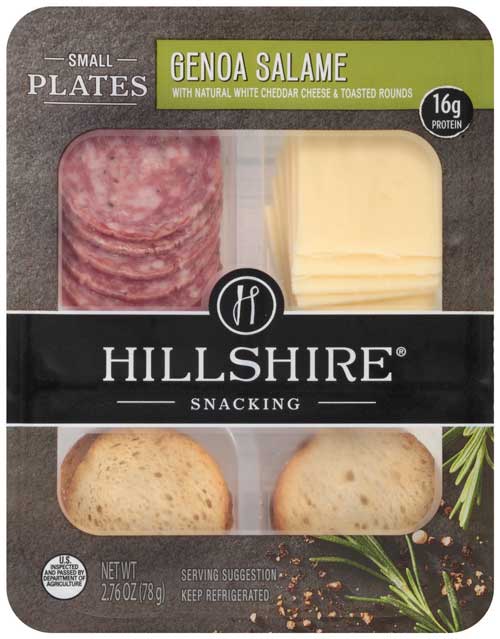 Mini Meals
Mini Meals
Consumers are increasingly looking for something more substantial than traditional snack foods to get them from one eating occasion to the next. “Sometimes you just want something bigger than a bag of chips but smaller than a full blown meal,” says Pamela Oscarson, consumer insights manager for FONA International, Geneva, Ill.
“There is a perception that snacks are intended more for in-between meals than for actual meal replacements,” says Susan Dunn, executive vice president, Global Professional Services, Nielsen. “But busy, on-the-go lifestyles often dictate a need for quick meals, and many opt for fast food options that can be high in calories and low in health benefits. There is a massive untapped opportunity to gain market share in the nutritious, portable, and easy-to-eat meal alternative market that snack manufacturers could fill” (Nielsen 2014).
Smaller offerings of different kinds of meals and snacks allow consumers to put together individualized eating occasions that serve their current needs, but it’s important that these components provide the energy and nutrition of the meals they may be replacing (IDDBA 2015). These mini meals show a shift toward savory, which is reflective of the ingredients that would normally be found in traditional meals, according to Melissa Abbott, director of culinary insights for The Hartman Group. Mini meals may also be driven by a consumer desire for lower price points, and some restaurants, such as Arby’s, have begun offering sliders and smaller sandwiches for this kind of consumer.
Product examples include the Hillshire Snacking line, which includes Grilled Chicken Bites with dipping sauces and Small Plates, which combine air-dried salami, natural cheese, and toasted rounds. Oscar Mayer’s P3 Portable Protein Packs, meanwhile, pair meat, cheese, and nuts and provide 10–13 grams of protein.
Frozen appetizers and snacks may also be a good option, but there is opportunity for making these more innovative, exciting, and healthier to draw more consumers. One innovative example is Nestlé’s Hot Pockets Food Truck line, which was co-created with operators of food trucks. Flavors include Fiery Jalapeño Lime Chicken Rollers designed with Los Angeles’ The Lobo Truck team and the Triple Cheesy Bacon Melt created with Chicago’s Toasty Cheese truck product developers.
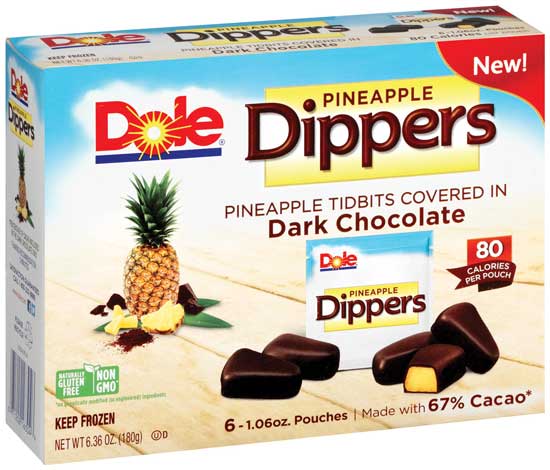 Sweets
Sweets
While more than a third of consumers say they are limiting their intake of sweet snacks (Mintel 2015a), many are still reaching for treat foods, but they are trying to balance indulgence with health. “Earlier in the day you’re going to be healthier, looking for that healthy option, something fast, something that will boost your energy level,” says Lu Ann Williams director of innovation for Innova Market Insights, who spoke during a webcast presented by the Almond Board of California. “By the end of the day, you’re really looking for reward and indulgence.”
“Snackers are looking for something special, enjoyable, and fulfilling that’s just for them,” observes Rob Renegar, insights manager for the Sterling-Rice Group, who also spoke during the webcast. But what one person defines as sweet might not be the same for someone else. A consumer who prefers healthier foods, says Renegar, might consider a piece of fruit a sweet indulgence while another might opt for a chocolate bar. “Is it fruit or chocolate?” he asks. “It’s both; it just depends on who you’re talking to.”
Some ways to provide consumers with what Abbott calls “permissible indulgence” include smaller versions of traditional treats, such as 7 Select GO!Yum Mini Cookie Cups, Madeleines, and Palmiers, as well as single-serve snack mixes such as those from Hershey that pair chocolate or peanut butter pieces with nuts and pretzels. Other options add an element of sweet to a healthful base product, such as Element rice cakes coated with caramel and chocolate flavors and Dole Dippers, chocolate-covered frozen fruit pieces. Popcorn Indiana’s Chocolate Fudge Bar, meanwhile, combines popcorn with a drizzle of chocolate fudge for a 100-calorie bar that’s crispy, crunchy, and sweet.
“Snacks can have a healthy halo and still taste like an indulgent treat. Indulgent and healthy no longer have to fight each other,” concludes Lesley Nicholson, marketing manager for WILD Flavors & Specialty Ingredients.
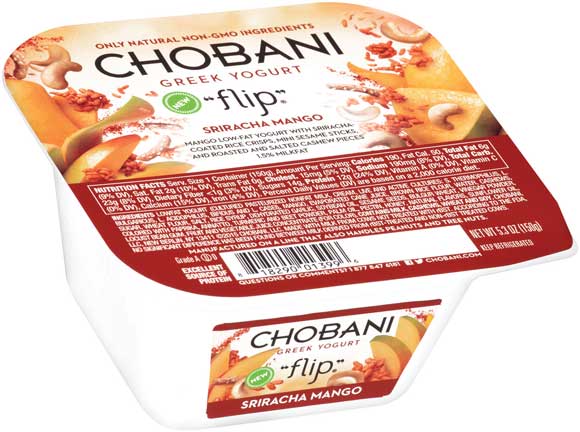 Yogurt
Yogurt
Yogurt, a longtime breakfast staple, has exploded with the popularity of Greek yogurt, and a variety of other “place”-inspired yogurt types have appeared on the market, including Icelandic and Australian. Yogurt is also evolving in terms of its usage opportunities and flavor profiles. There are cross-category opportunities in yogurt, says Williams—varieties with fruit and nuts can be eaten for lunch or breakfast, and adding mix-ins and toppings, such as Chobani Flips, can turn it into an indulgent dessert option. Or, by adding oats, yogurt can provide both probiotics and protein as well as fiber.
As with many other snack types, yogurt has shifted into savory. Blue Hill offers veggie-based yogurts that contain carrot, tomato, and beet, and the company plans to introduce drinkable versions soon. Chobani offers its Flips line in Sriracha Mango and Chipotle Pineapple, and Noosa introduced a Blackberry Serrano flavor of its Australian-style yogurt. Chobani also introduced a line of Meze Greek yogurt-based dips, which the company intends consumers to pair with pretzels or sliced vegetables, giving yogurt yet another usage occasion.
Perhaps in response to yogurt’s higher sugar levels and consumer demand for less sweet products, some companies have begun offering options with no added sugar, such as Wallaby’s Purely Unsweetened line. Ruby’s Naturals’ Ruby Rockets, a squeezable, shelf-stable yogurt-type product, blends veggies, fruit, and plant-based protein and uses no added sugar.
As with snacks in general, specific, authentic flavors have also appeared in yogurt, such as Liberté’s Ecuadorian Mango, Philippine Coconut, Baja Strawberry, Indonesian Vanilla Bean, and Brazilian Sea Salt Caramel, which the company says “reflect our passion for exploring cultures and for crafting premium dairy products.”
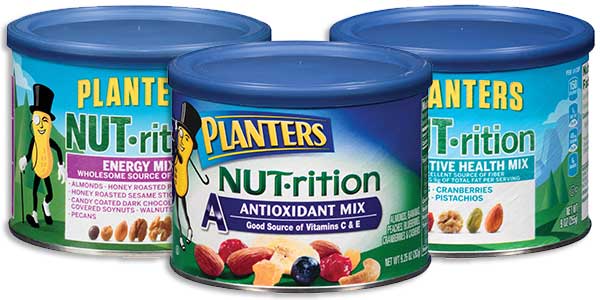 Nuts, Legumes & Seeds
Nuts, Legumes & Seeds
With 63% of consumers looking for protein content and 57% saying that they are trying to get as much protein into their diets as possible (FONA 2015a), nuts, seeds, and legumes provide a convenient, clean way to consume protein and enjoy a salty snack. These foods are also easily seasoned, meaning manufacturers can consider the sky the limit when it comes to creating fun new flavors. Wixon, St. Francis, Wis., offers a Maple Ale and a Spicy Thai Lemongrass seasoning that works well with nuts, and the Almond Board of California, Modesto, Calif., provides recipes for blends such as Ginger Citrus and Spicy Cajun.
Almonds are the No. 2 specific food after apples that come to consumers’ minds when asked to list healthy snacks, and they are also the top nut associated with snacking, according to Molly Spence, director of North America, Almond Board of California. “Consumers ranked almonds far above other nuts in a variety of attributes, including ‘on the go’ (84%), ‘convenient/easy to eat’ (83%), ‘good as a snack’ (83%), and ‘nutritious’ (82%),” she says. Spence adds that almonds contains 4 grams of fiber and 6 grams of protein per ounce, the highest of any nut. But pistachios, cashews, and peanuts abound in a variety of products, including Essential Living Foods’ Enlighten Mix, a combination of mango, coconut, cashews, mulberries, and pistachios, as well as Planters’ NUT-rition mixes, which feature protein, energy, omega-3, heart health, and antioxidant claims, depending on the variety.
On the legume side, dried peas, chickpeas, and beans offer poppable, crunchable on-the-go snacking, as these products are often packaged in resealable pouches. Examples include World Peas, a line of responsibly sourced peas and fava beans that are low in calories and high in protein and fiber. SuperSeedz, meanwhile, offers no-shell pumpkin seeds in flavors such as Super Spicy, Curious Curry, and Tomato Italiano. In addition, hemp seeds are experiencing popularity thanks to their health benefits and nutty taste; hemp-containing product sales increased more than 20% between 2014 and 2015 (Packaged Facts 2016a). Roasted hemp seeds from Ziggy Marley Organics are flavored with Caribbean seasoning or sea salt and pepper. Brami Snacking Lupini Beans, which the company says are the Mediterranean answer to Japanese edamame, or soybeans, provide 35 calories per serving with 4 grams of fiber and protein and come in mild and spicy flavors.
Hummus sales are at an all-time high in the United States, with 26% of U.S. households purchasing the chickpea-based dips (Packaged Facts 2016a). Flavors offered by Sabra range from traditional Classic and Roasted Garlic to Jalapeño and Spinach and Artichoke. Hummus also appears in convenience packs, such as those from GoPicnic, which pair hummus with multiseed crackers, a fruit and nut mix, an edamame and seed blend, and a chewy chocolate rice crisp bar. The mini meal provides 19 grams of protein in 380 calories.
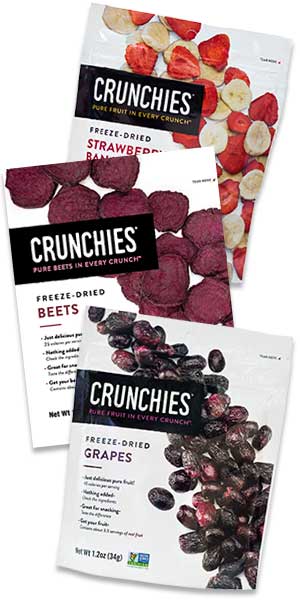 Fruits & Vegetables
Fruits & Vegetables
“I think vegetables in any way they’re made is a trend,” says Williams. She named vegetable-containing products one of Innova’s 2016 trends, noting that veggies are popping up in a variety of product types. Fruit and alternative vegetable chips were a major trend in 2015, with a growth of 20% (Packaged Facts 2016b). These snacks, such as chips made from cassava, plantains, and soy, appeal to Millennials and Gen Xers (Packaged Facts 2016b); the healthful base ingredients provide a health halo and allow consumers to enjoy snacking while feeling better about their choices.
Freeze-dried fruit maker Crunchies recently released a beet variety, and Simply7’s Veggie Chips contain 39% less fat and 59% more fiber than regular potato chips. Dang, which already makes coconut chips, recently introduced its onion variety, billing the puffy snacks as a healthy alternative to Funyuns.
Natierra’s Chia Crunch, meanwhile, combines Fair Trade chia seeds with vitamin-enriched freeze-dried fruits and vegetables, and Wonderfully Raw offers Brussels Bites, Snip Chips made from parsnips, and Dipperz, dried broccoli, cauliflower, and carrot pieces seasoned with flavors including Lemongrass Chili and Ranch.
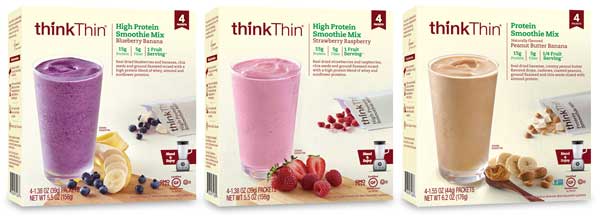 Beverages
Beverages
While a meal may still require chewing, a snack no longer does (Hartman 2016). From lattes to smoothies to functional waters, beverages can provide the boost consumers are seeking in a snack. ITO EN’s Matcha Love Matcha Colada combines the benefits of matcha with those of coconut water in a refreshing drink, and Bai offers low-sugar, antioxidant-infused flavored waters with just 5 calories.
Smoothies compress fruits and vegetables into a drinkable snack, and kits like ThinkThin’s shelf-stable High Protein Smoothie Mix allow consumers to easily blend their own. The Blueberry Banana flavor provides 15 grams of protein, 5 grams of fiber, and one fruit serving through its dried fruit, chia, and ground flax with a blend of whey, almond, and sunflower protein.
Many companies have introduced different forms of drinkable dairy, such as kefir and liquid yogurt, including Siggi’s filmjölk, a drinkable yogurt with a soft, buttery flavor, and Chobani’s soon-to-be-released Drink Chobani yogurt beverage, which the company says is a good source of protein. Dahlicious Lassi, meanwhile, promotes the probiotic qualities of its drinkable cultured Indian yogurt. Many of these products advertise their low-sugar attributes and may be yet another way to appeal to health-minded snackers.
Drinkable soups, such as those from Tio Gazpacho, allow consumers to drink their lunch anywhere. The “no bowl required” soups contain organic vegetables such as tomatoes, cucumber, green pepper, and garlic and provide just 100–140 calories per 12-ounce bottle.
References are listed with the Consumers Get Serious About Snacking feature in this issue.
